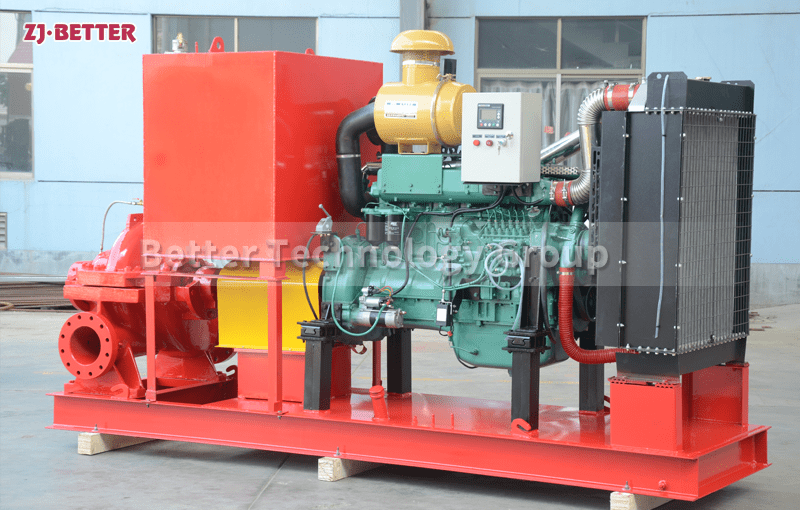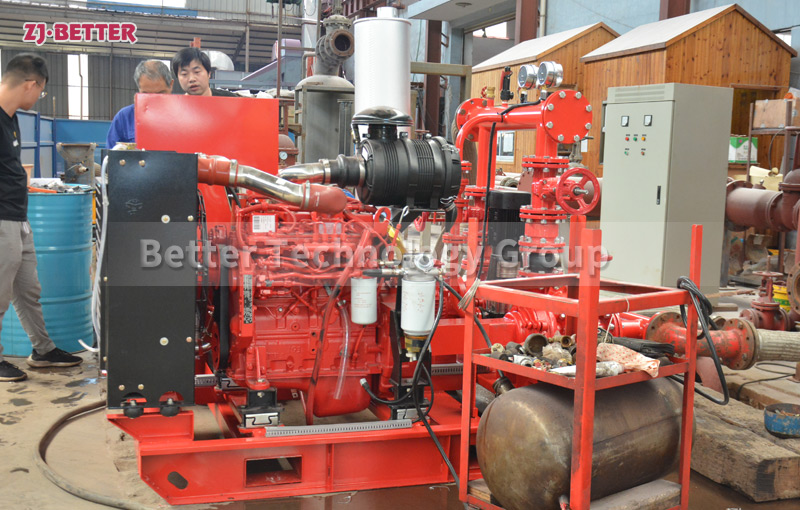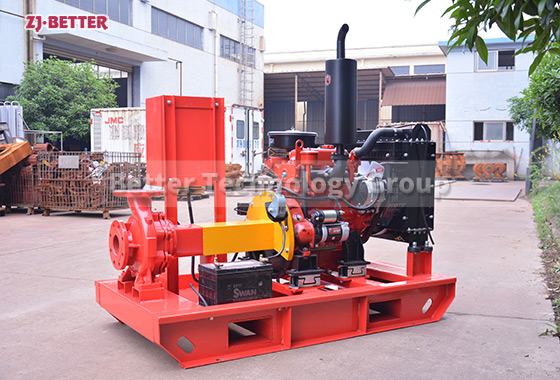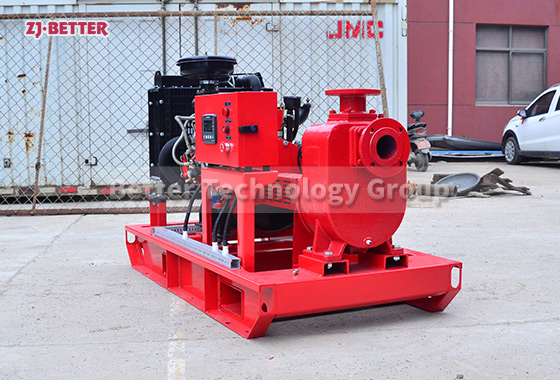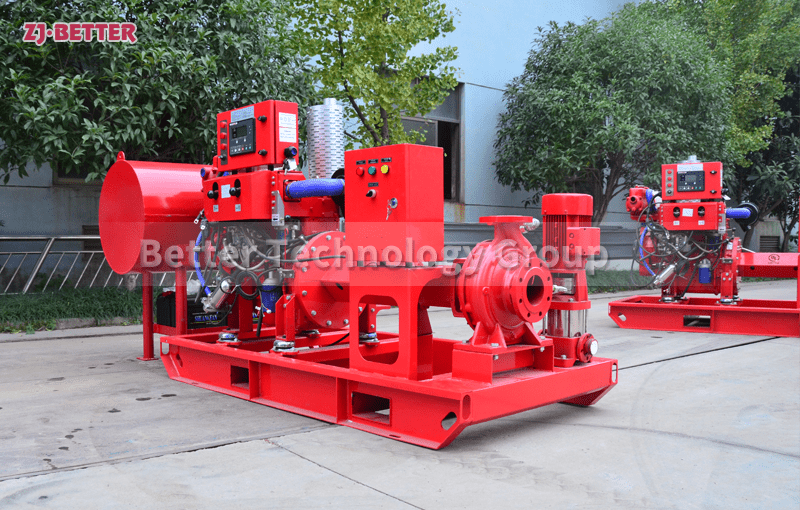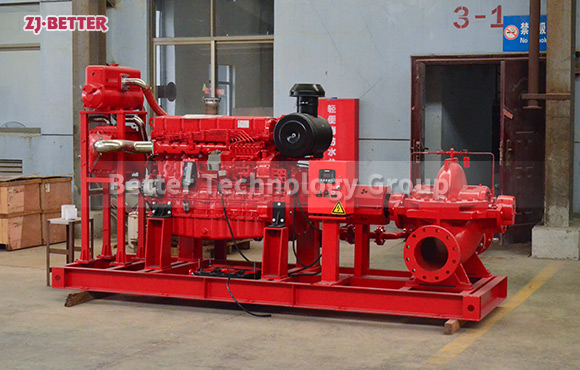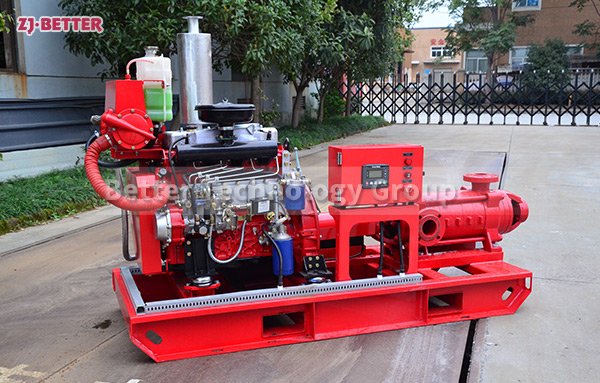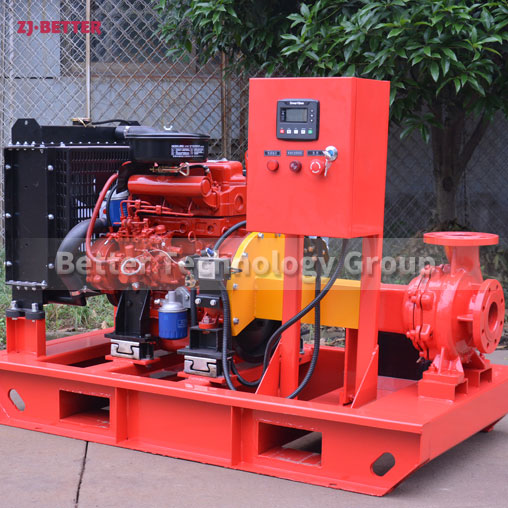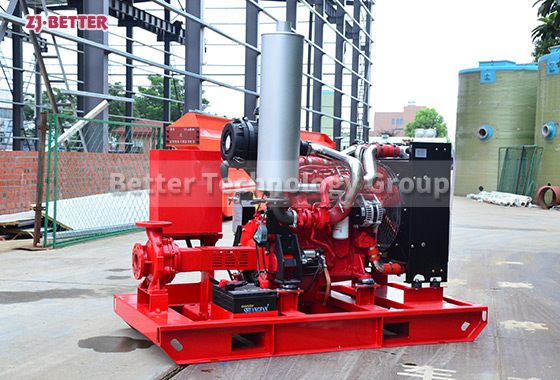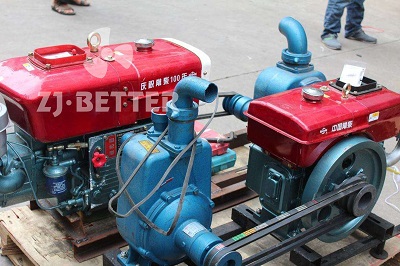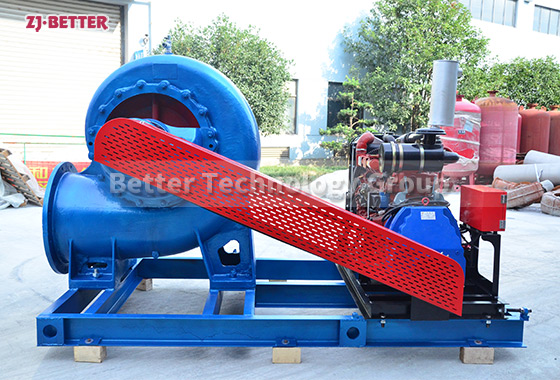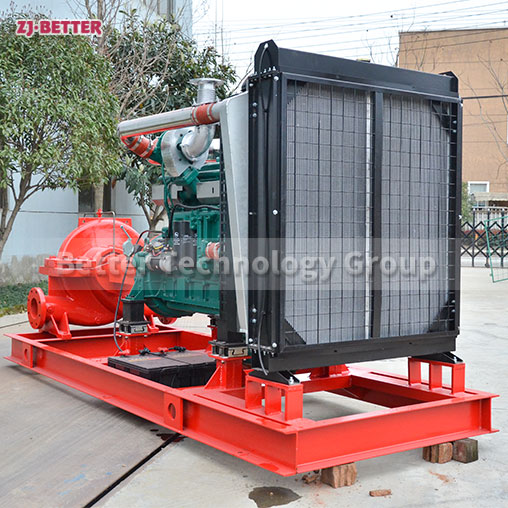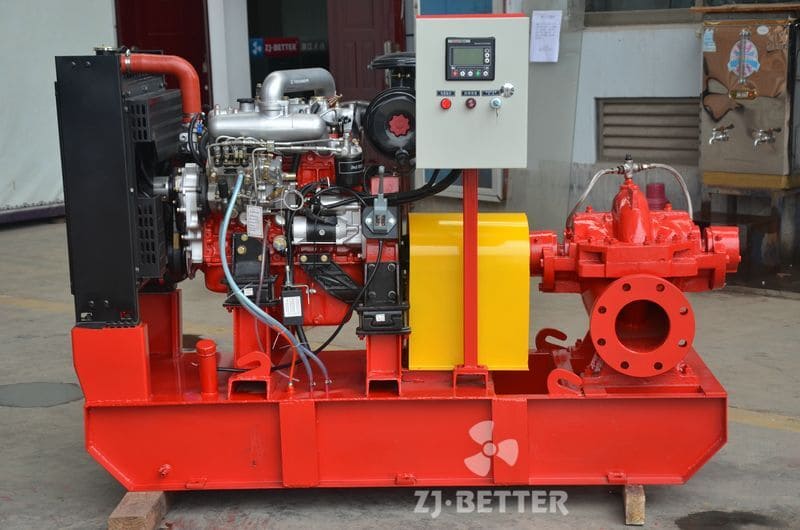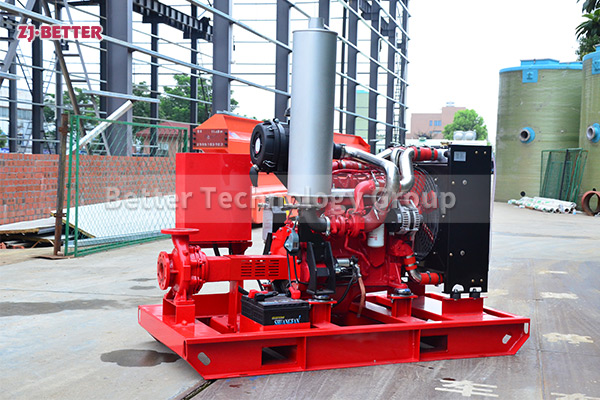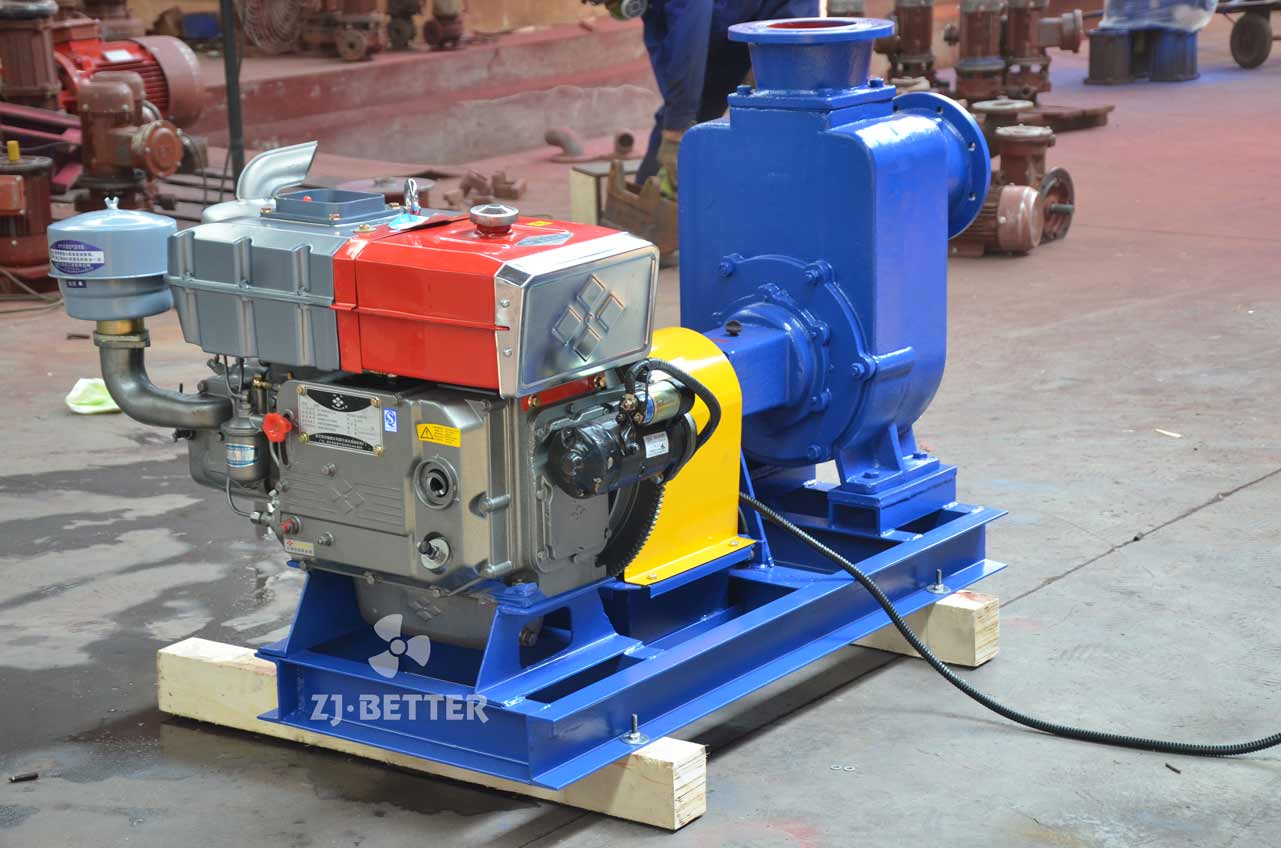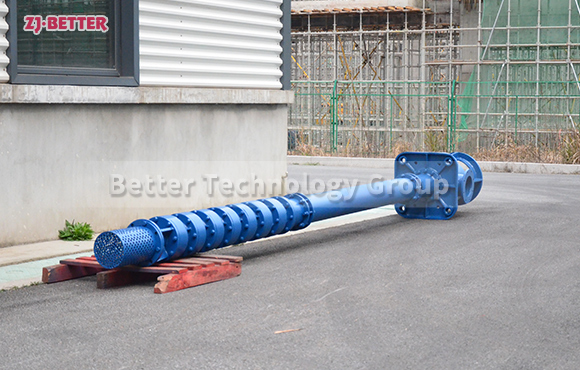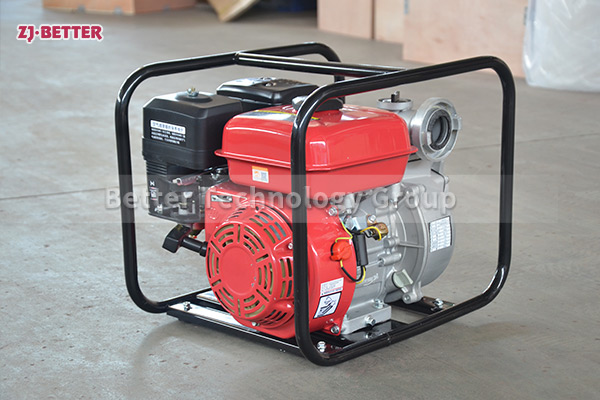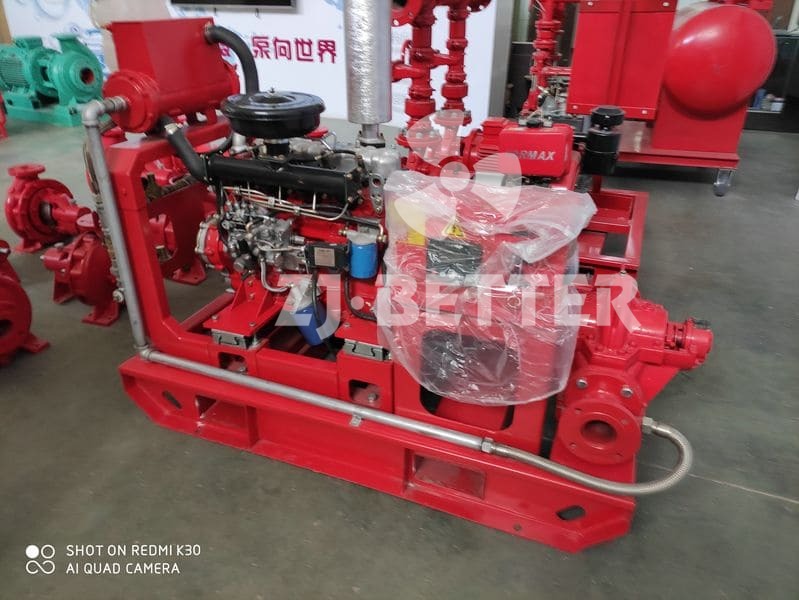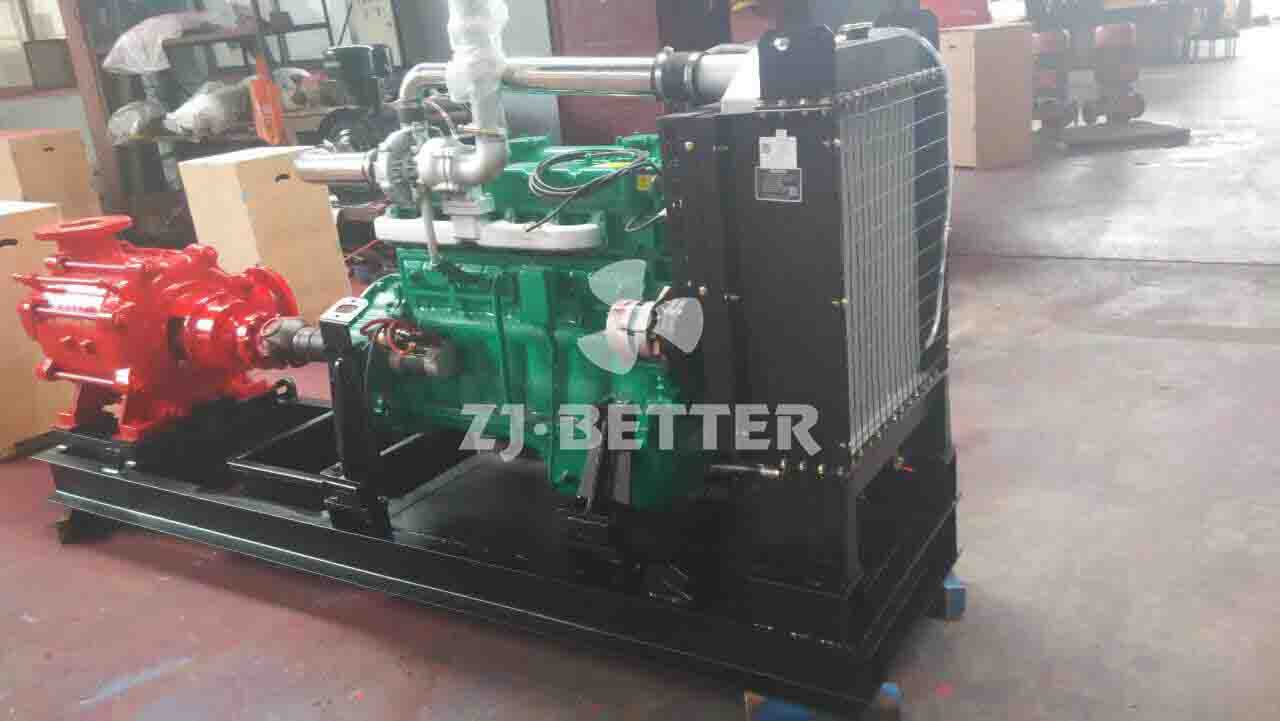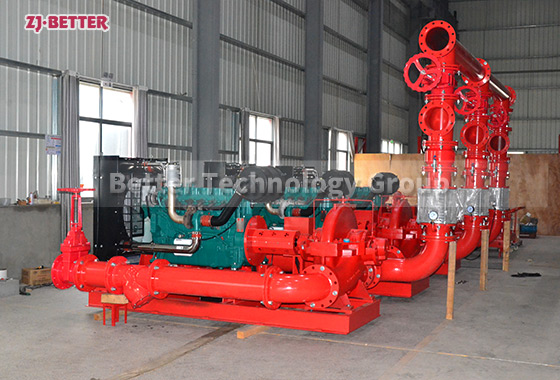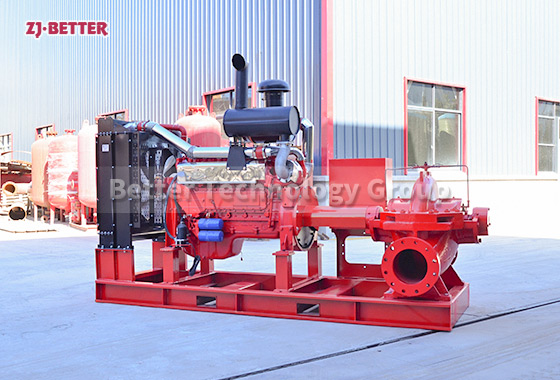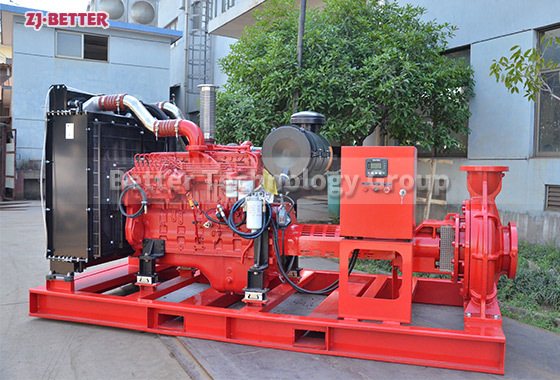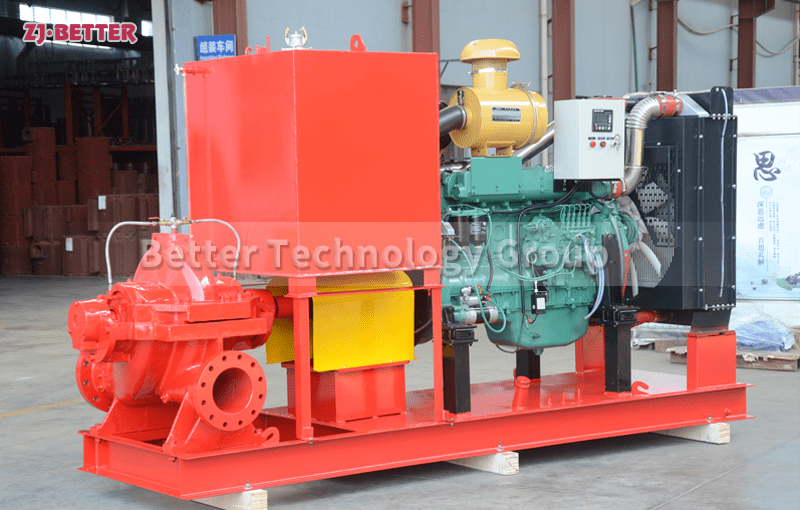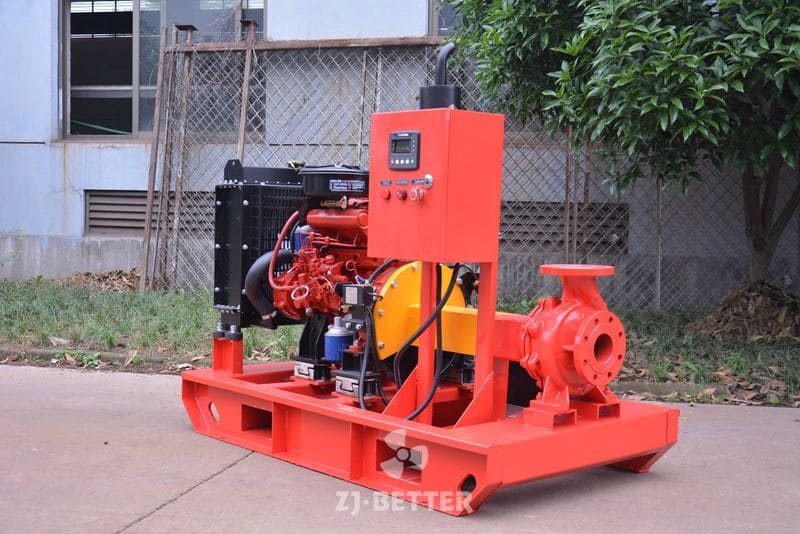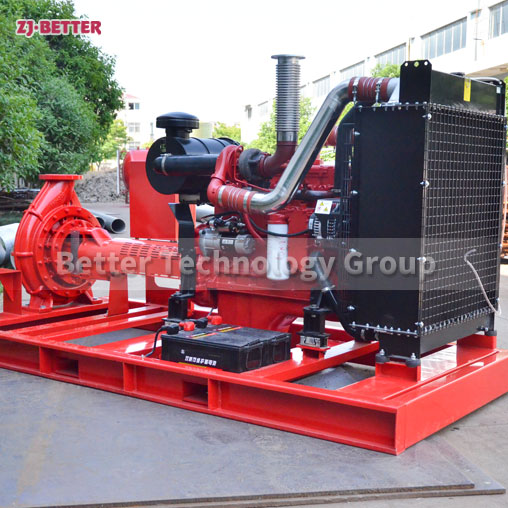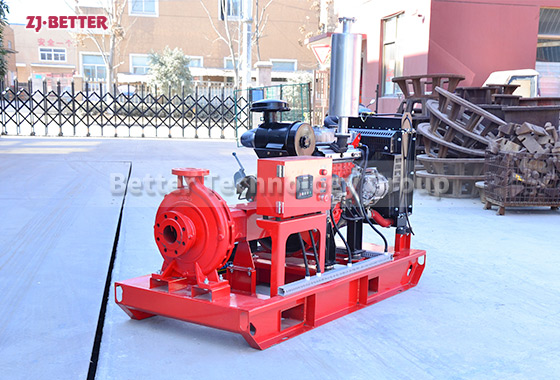Diesel engine fire pump set function description
Fire pumps are used in the equipment of the fire protection system. Their function is to increase the pressure to supplement the water source, so as to achieve the purpose of extinguishing the fire. Moreover, the equipment adopts high-tech means and introduces advanced technology, which has incomparable advantages over other products.
The diesel engine fire pump unit can form an automatic water fire water supply system with electric pumps and stabilized pressure pumps, and can be linked with the fire control center.
When the diesel engine fire pump set receives the starting command, if the mains power is cut off, the automatic control cabinet of the diesel engine will immediately send a start signal to the starting motor of the pump set, start the motor, start the diesel engine at idle speed, and then gradually adjust the throttle to accelerate the diesel engine until Rated speed. The control system will automatically monitor the operation of the diesel engine, such as the oil pressure, oil temperature, speed of the diesel engine, outlet pressure of the water pump, etc., and determine whether the diesel engine starts normally through automatic monitoring. If the start fails, the control system will send a restart signal, and if the three starts fail, the automatic control system will send a failure alarm. When the diesel engine fire pump unit receives a signal that the pressure of the pipe network is restored or the mains power is restored to normal, the pump unit will quickly slow down and stop automatically after monitoring the idle position for a period of time.

